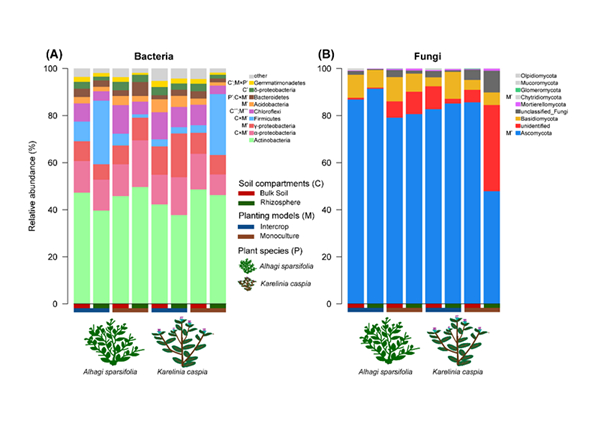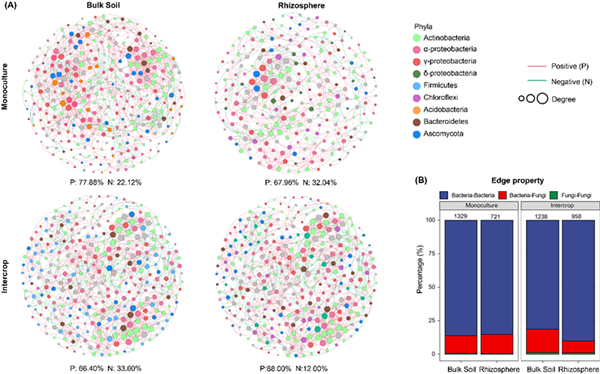Study: Interspecific Interaction of Desert Plants Modify Underground Microbial Communities and Weaken Host Effects in a Hyper-arid Desert
2021-11-01
Researchers from Xinjiang Institute of Ecology and Geography, Chinese Academy of Sciences, have found that interspecific interaction between desert plants has the potential to regulate belowground microbial communities.
The findings were published in Frontiers in Microbiology, entitled "Intercropping systems modify desert plant-associated microbial communities and weaken host effects in a hyper-arid desert".
Intercropping is an important practice in promoting plant diversity and productivity. Compared to the accumulated understanding of the legume/non-legume crop intercrops, very little is known about the effect of this practice when applied to native species on soil microbial communities in the desert ecosystem.
In this study, the researchers investigated the microbial communities of bulk soil and rhizosphere in the two-year Alhagi sparsifolia (legume) /Karelinia caspica (non-legume) monoculture vs. intercropping systems under field conditions.
Results showed that bacterial and fungal communities associated with A. sparsifolia and K. caspica differ between monoculture and intercropping systems, despite the lack of significant difference of bacterial richness. Plant genotypes play a limited effect on rhizosphere microbial communities in intercropping systems. Soil compartments did not differentiate the fungal community in monoculture. Bacterial and fungal communities from bulk soil and rhizosphere respond differently to monoculture and intercropping systems. Compared with bulk soil, the rhizosphere microbial community may be more resistant to environmental perturbation, and its overall complexity can be enhanced by intercropping.
The data also point out that intercropping systems can increase the modularity and stability of microbial co-occurrence networks in bulk soil and promote more microbial inter-kingdom interactions. Furthermore, microorganisms with different concurrence degrees have different responses to planting patterns. Monoculture systems did not influence the highly co-occurring microbes, while all these keystone taxa were presented in intercropping systems and were Actinobacteria-dominated.
The result provides a potential strategy to regulate soil microbial communities and rationally allocate plant species in desert ecosystems.
Article link: https://www.frontiersin.org/articles/10.3389/fmicb.2021.754453/abstract

Fig. 1 The relative abundance of dominant (>1%) phyla in bacterial (A) and fungal communities (B).

Fig. 2 The microbial co-occurrence network of bulk soil and rhizosphere in each planting pattern. (A) individual networks; (B) edge property
Contact: LIU Jie, Xinjiang Institute of Ecology and Geography
E-mail: liujie@ms.xjb.ac.cn



